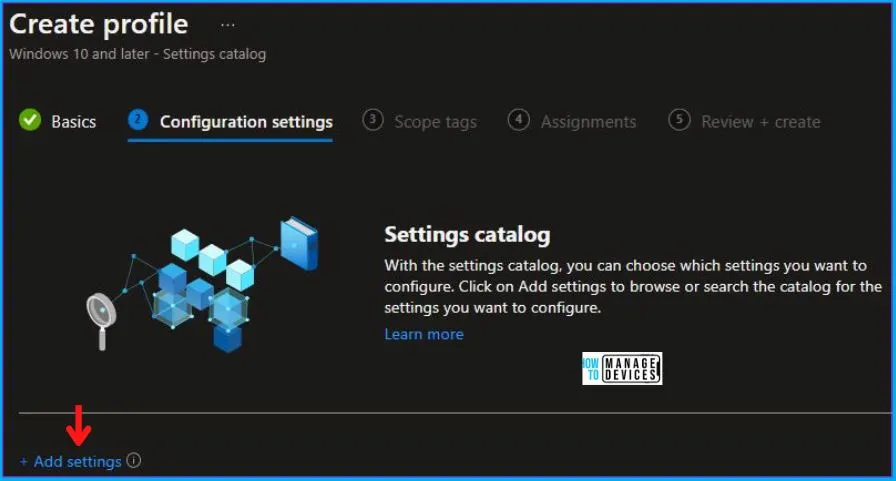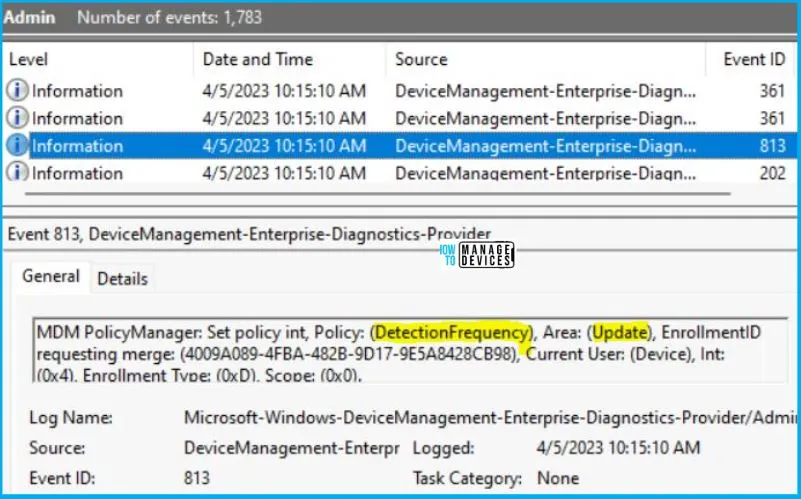Another day, Another Post!!! Here is next in the Configuration Profiles segment. Speed up Windows Update Detection Frequency Policy will be covered. Here also, we will make use of Configuration Profiles from Intune.
It is important to understand what the Windows Update Detection Frequency policy is for. Detection frequency for Windows Updates is set with this configuration profile. As part of the Windows Autopatch service, this policy is required. You cannot save any changes you make to this policy. If any changes are made, Windows Autopatch will overwrite them.
Windows will determine how long to wait before checking for available updates depending on the specified hours. A random variation of 0-4 hours is added to the specific value to determine the exact wait time. And. this will only be done if the status is set to Enabled, Windows will only check for available updates at the specified interval.
Windows will check for updates at the default interval of 22 hours if the status is Disabled or this Windows Update Detection Frequency Policy is not Configured using Configuration Profiles by Intune. Also, this policy has no effect If the “Configure Automatic Updates” policy is disabled.
If you want Windows Update Detection Frequency Policy to be successful, then the “Specify intranet Microsoft update service location” setting must be enabled. For more details on the monthly Windows patching speed-up policy, you can refer to YouTube Short Video – Windows Update Detection Frequency to Speed up Windows Patching.
- Expedite Microsoft Office Apps Updates using Intune Policy | Faster Updates for M365 Apps
- Detect Potentially Unwanted Applications using Intune
Windows CSP Details DetectionFrequency
Let’s go through Windows CSP Details for this Policy setting DetectionFrequency. Windows will check for updates at the default interval of 22 hours if the status is Disabled or this Windows Update Detection Frequency Policy is not configured. You cannot use this policy setting if you enable the Do not use temporary folders per session policy setting.
- When UpdateServiceUrl is configured to point the device at a WSUS server instead of Microsoft Update, this policy should be enabled only.
- %WINDOWS_ARM_VERSION_6_2% does not support this policy. This policy will not affect %WINDOWS_ARM_VERSION_6_2% PCs even if you set this policy.
CSP URI – ./Device/Vendor/MSFT/Policy/Config/Update/DetectionFrequency

Speed up Windows Update Detection Frequency Policy Using Intune
To set Windows Update Detection Frequency Policy Using Intune, follow the steps stated below:
- Sign in to the Intune Admin Center portal https://intune.microsoft.com/.
- Select Devices > Windows > Configuration profiles > Create a profile.
In Create Profile, Select Windows 10 and later in Platform, and Select Profile Type as Settings catalog. Click on Create button.
| Platform | Profile Type |
|---|---|
| Windows 10 and later | Settings Catalog |

In the Basics tab pane, enter a name for the Policy as Windows Update Detection Frequency Policy. You can enter the Description for the Policy if you want, then select Next.

Now in Configuration settings, click Add Settings to browse or search the catalog for the settings you want to configure.

In the Settings Picker windows, search by the keyword Detection Frequency, and you will see Windows Update for Business, and select this.
When you select the option as stated above, you will see one setting, which is Detection Frequency. After selecting your setting, click the cross mark at the right-hand corner, as shown below.

Now, in the Windows Update for Business, enter value 4 for Detection Frequency, as shown below in the image.

You can assign a tag to filter the profile to specific IT groups using Scope tags. One can add scope tags (if required) and click Next to continue. Now in Assignments, in Included Groups, you need to click on Add Groups, choose Select Groups to include one or more groups, and click Next to continue.

In the Review + Create tab, you need to review your settings. After clicking on Create, your changes are saved, and the profile is assigned.

If you see it in the top right-hand corner a notification will appear automatically. One can easily see that the “Windows Update Detection Frequency Policy” was created successfully. Also, if you check in the Configuration Profiles list, the Policy is visible there.
Your groups will receive your profile settings when the devices check in with the Intune service. The Policy applies to the device.
Intune Report for Windows Update Detection Frequency Policy
From Intune Portal, you can view the Intune settings catalog profile report, which provides an overview of device configuration policies and deployment status.
One needs to select the Policy from the list of Configuration Profiles, To monitor the policy assignment, and, here it’s been checked the device and user check-in status. If you click View Report, additional details are displayed. Let’s now check the results of Office Update policy settings.

Intune MDM Event Log
String policy has been applied to Windows 10 or 11 devices can be indicated by Intune event ID 813 or 814. In addition, you can view the exact value of the Policy that is being applied to those devices. For this policy, it’s an integer value and event ID 813.
To confirm this, you can check the Event log path – Applications and Services Logs – Microsoft – Windows – Devicemanagement-Enterprise-Diagnostics-Provider – Admin.
The log states the following – MDM PolicyManager: Set policy int, Policy: (DetectionFrequency), Area: (Update), EnrollmentID requesting merge: (4009A089-4FBA-482B-9D17-9E5A8428CB98), Current User: (Device), Int: (0x4), Enrollment Type: (0xD), Scope: (0x0).

You will get some important information like Area and Enrollment ID that will help you detect the registry path after you look in the event viewer log above. Please refer to the below table for this information:
| Area | Policy | Integer Value | Scoped | Event ID |
|---|---|---|---|---|
| Update | DetectionFrequency | 4 | Device | 813 |
Information from the above table of Windows Update Detection Frequency Policy Using Intune can be used to REGEDIT.exe on a target computer to view the registry settings that store group policy settings. These settings are located in the registry path.
- Computer\HKEY_LOCAL_MACHINE\SOFTWARE\Microsoft\PolicyManager\providers\4009A089-4FBA-482B-9D17-9E5A8428CB98\default\Device\Update
When you navigate to the above path in the Registry Editor, you will find the registry key with the name DetectionFrequency. Refer to the table and image below.
| Registry Name | Value Data |
|---|---|
| DetectionFrequency | 4 |

Author
Abhinav Rana is working as an SCCM Admin. He loves to help the community by sharing his knowledge. He is a B.Tech graduate in Information Technology.
